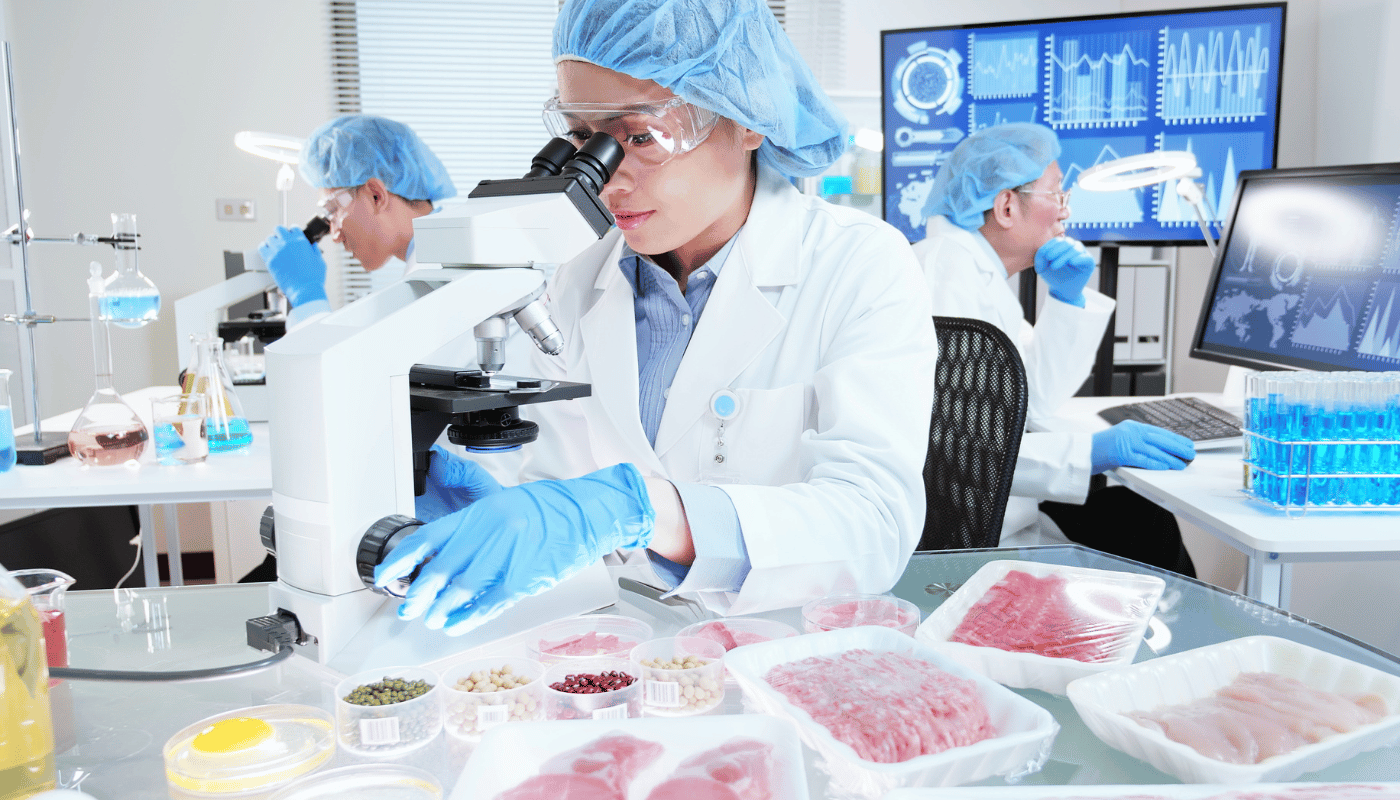In the quest for maintaining a healthy kitchen environment, understanding how to prevent biological hazards is crucial. From the ingredients we select to the methods we employ in food preparation, the stakes are high in ensuring safety and preventing illness. This article sheds light on essential food safety practices that are pivotal in averting biological risks, offering insights that are both practical and transformative. Dive in to discover the key strategies that can make your kitchen a safer place for everyone.
Proper Hand Washing Techniques
One of the cornerstone practices for preventing biological hazards in food preparation is maintaining rigorous hand hygiene. Effective hand washing is not just a cursory rinse under water; it involves a series of deliberate steps to ensure that all potential contaminants are removed. The Centers for Disease Control and Prevention (CDC) emphasizes the importance of wetting hands with clean, running water before applying soap. The act of scrubbing should last at least 20 seconds, paying close attention to the back of the hands, between the fingers, and under the nails where pathogens are most likely to hide. A thorough rinse and the use of a clean towel or air drying are critical to avoid recontamination.
Relying on hand sanitizers alone is not sufficient, especially when hands are visibly dirty or greasy. These products do not eliminate all types of germs and may not be as effective in removing harmful chemicals and heavy metals. Therefore, traditional hand washing with soap and water stands as the most effective method to prevent the transmission of foodborne illnesses caused by bacteria, viruses, and other pathogens.
Consistency in hand hygiene practices among all staff members is imperative to mitigate the risk of biological hazards in food. Regular training sessions, clear signage, and readily available hand washing stations are key strategies to promote adherence to proper hand washing techniques within food handling environments.
| Step | Action | Duration |
|---|---|---|
| 1 | Wet hands with clean, running water | N/A |
| 2 | Apply soap | N/A |
| 3 | Lather and scrub thoroughly | At least 20 seconds |
| 4 | Rinse hands under clean, running water | N/A |
| 5 | Dry hands using a clean towel or air dry | N/A |
Understanding the significance of proper hand washing techniques extends beyond the realm of professional kitchens and food processing plants. It is a universal precautionary measure that plays a pivotal role in safeguarding public health. Not only does it prevent the spread of foodborne illnesses, but it also minimizes the transmission of common infectious diseases. Therefore, cultivating a habit of thorough hand washing is essential, highlighting its role as a fundamental, yet powerful, tool in promoting hygiene and preventing disease.
Storing Foods at Safe Temperatures
Ensuring food safety involves a myriad of practices, among which storing foods at safe temperatures stands out as a critical measure to prevent biological hazards. Temperature control is essential in inhibiting the growth of harmful bacteria that can cause foodborne illnesses. The principle behind this practice is simple yet profoundly effective: keeping perishable items either cold or hot enough to prevent the proliferation of pathogens.
Refrigeration at or below 40°F (4°C) slows down most bacteria’s growth, significantly reducing the risk of food poisoning. Freezing at 0°F (-18°C) can stop bacterial growth altogether, although it does not kill all bacteria. On the other end of the spectrum, cooking and maintaining foods at temperatures above 140°F (60°C) will kill most bacteria, making the food safe to eat. However, it is crucial to promptly cool leftovers before refrigerating to avoid the “danger zone” between 40°F and 140°F, where bacteria can multiply rapidly.
Additional Insights on Safe Temperature Storage
Understanding the precise temperature requirements for different types of food is vital for effective storage. For instance, dairy products, meat, poultry, seafood, and prepared dishes have specific storage temperature needs. Here are some additional insights to consider:
- Regularly monitor refrigerator and freezer temperatures to ensure they are within safe limits.
- Use appliance thermometers to keep accurate readings.
- Avoid overcrowding the refrigerator to allow cold air to circulate effectively.
- Understand the shelf life of various foods to prioritize their consumption.
- Implement a “first-in, first-out” policy to use older items first and reduce waste.
Deeper Dive into Temperature Control for Food Safety
Acknowledging the complexities of food safety, it becomes apparent that temperature control is more than just a set-it-and-forget-it task. It requires constant vigilance, regular equipment checks, and an understanding of how different foods interact with temperatures. By embracing these practices, households and businesses can significantly mitigate the risks associated with biological hazards in food, ensuring the well-being of those who consume it.
Avoiding Cross-Contamination
One of the most critical strategies in preventing biological hazards in food safety is avoiding cross-contamination. Cross-contamination occurs when harmful bacteria or viruses are unintentionally transferred from one food to another, potentially causing foodborne illnesses. This can happen through direct contact between foods, or indirectly when foods come into contact with contaminated surfaces, equipment, or hands. To combat this, it is essential to implement strict hygiene and handling procedures in food preparation areas.
Key practices include using separate cutting boards and utensils for different types of foods, such as raw meats and vegetables. This simple step can significantly reduce the risk of cross-contamination. Additionally, ensuring that all surfaces and equipment are thoroughly cleaned and sanitized before and after use is crucial. It’s also important to practice proper food storage, keeping raw and cooked foods separate and storing them at the correct temperatures to inhibit bacterial growth.
Enhancing Kitchen Hygiene to Combat Cross-Contamination
Enhancing kitchen hygiene plays a vital role in avoiding cross-contamination. Regular hand washing, especially before handling different food types and after touching raw food, is imperative. Wearing protective clothing, such as gloves, can also help prevent the transfer of harmful microorganisms. By fostering a culture of cleanliness and safety, we can significantly reduce the risks associated with biological hazards in the food industry.
- Use separate cutting boards and knives for raw meats and other foods.
- Regularly disinfect kitchen surfaces and equipment.
- Store raw and cooked foods separately in the refrigerator.
- Ensure hands are washed thoroughly with soap and water before and after handling different food types.
- Maintain correct food storage temperatures to prevent bacterial growth.
Cooking Foods to Proper Temperatures
Ensuring that food is cooked to the correct temperature is a fundamental food safety practice that significantly helps in preventing biological hazards. Pathogens such as bacteria, viruses, and parasites are often present in raw or undercooked food. These can cause foodborne illnesses, which can be severe or even life-threatening. The only way to effectively kill these pathogens is by cooking food to a safe internal temperature.
Each type of food has a specific minimum cooking temperature recommended by food safety authorities. For instance, poultry should be cooked to an internal temperature of 165°F (74°C), ground meats require a minimum of 160°F (71°C), and most seafood should reach 145°F (63°C). Using a food thermometer is the most reliable method to check that these temperatures have been met. It’s not enough to judge by color or texture alone, as these can be deceptive.
Additionally, it’s important to allow food to rest for a few minutes after cooking. This resting period enables the temperature to equalize throughout the dish, ensuring that the entire portion reaches the necessary safety threshold. Implementing this practice not only enhances food safety but also contributes to a better taste and texture of the cooked meal.
- Always use a food thermometer to check internal temperatures.
- Refer to a reliable cooking temperature guide for different foods.
- Allow meat to rest after cooking to ensure even heat distribution.
- Reheat leftovers to at least 165°F (74°C) to kill any bacteria that might have developed.
- Avoid partial cooking as it can promote bacterial growth.
Regularly Cleaning and Sanitizing Surfaces
One of the most effective strategies to prevent biological hazards in food preparation areas is the routine cleaning and sanitizing of surfaces. This practice is paramount because it directly targets the removal of pathogens that can contaminate food and cause foodborne illnesses. Surfaces that come into contact with food, such as cutting boards, countertops, and utensils, should be meticulously cleaned with soap and water to remove any food particles or residue. Following this, sanitizing with a solution capable of killing bacteria, viruses, and other harmful microorganisms is essential. This two-step process ensures that surfaces are not only visibly clean but also free from potential biological hazards.
To achieve optimal results, it is crucial to use the correct concentration of sanitizing solution and to allow sufficient contact time as per the manufacturer’s instructions. Furthermore, attention should be paid to the frequency of cleaning and sanitizing, especially in high-traffic kitchen areas and during peak food preparation times. Implementing a regular schedule for deep cleaning and daily maintenance can significantly reduce the risk of cross-contamination.
Moreover, the importance of training staff on proper cleaning techniques and the use of sanitizing solutions cannot be overstated. Ensuring that all employees are knowledgeable about food safety practices contributes to a culture of safety and cleanliness that can prevent the outbreak of foodborne illnesses. Additionally, the use of disposable gloves and other protective equipment can further minimize the risk of spreading contaminants.
Deep Dive: The Science Behind Sanitizing Solutions
Delving deeper into the effectiveness of sanitizing solutions, it’s important to understand the science that makes them an indispensable tool in food safety. The right sanitizing solution disrupts the cell walls of bacteria and other microorganisms, effectively neutralizing their ability to reproduce and cause illness. This action is critical in areas where raw food is prepared, as it can help prevent the spread of pathogens like Salmonella, E. coli, and Listeria. By adhering to guidelines on the proper use and storage of these chemicals, kitchens can maintain a safe environment for food preparation.
- Establish a regular cleaning schedule
- Train staff on proper sanitization techniques
- Use EPA-approved sanitizing solutions
- Maintain proper concentration and contact time for sanitizers
- Implement additional safety measures, such as wearing gloves
In conclusion, regularly cleaning and sanitizing surfaces is a fundamental food safety practice that plays a crucial role in preventing biological hazards. By understanding and implementing the correct procedures for cleaning and the science behind sanitizing solutions, food preparation areas can remain safe from contaminants. Continuous education and adherence to these practices ensure the wellbeing of both staff and customers, reinforcing the importance of food safety in the culinary industry.

Seasoned writer and casino expert with over eight years of experience in the gambling industry. Specializing in online casino reviews, game strategies, and industry trends, Nathan provides in-depth insights that help players make smart decisions. His work is known for its clarity and thoroughness, making complex topics accessible to both novice and experienced players.







